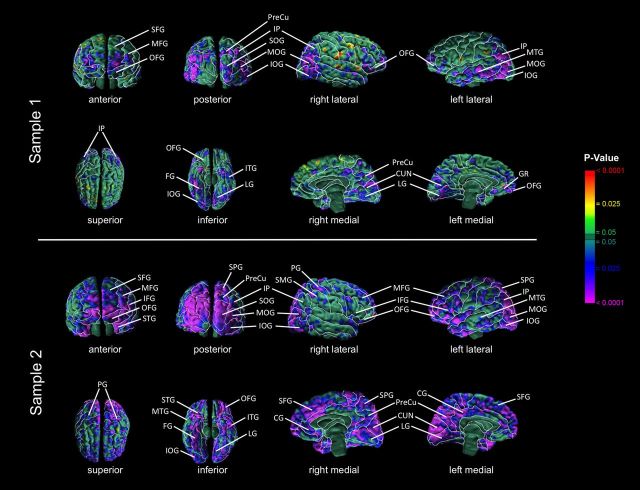Figure 1.
Significance maps showing correlations of cortical thickness (CT) with VIQ-regressed-on-PIQ scores. Maps of correlation of VIQ-regressed-on-PIQ scores with CT, corrected for multiple comparisons using FDR. At each point on the cerebral surface, the statistical significance (probability values) of the correlation of the VIQ-regressed-on-PIQ score with CT is color coded. Warm colors (yellow, orange, red) represent a positive correlation (thicker cortex as the residual score increases), and cooler colors (blue and purple) represent a negative correlation (thinner cortex as the residual score increases). The color bar indicates the color coding of p values for testing of statistical significance at each point on the surface of the brain. Top, Maps of sample 1, N = 83. Bottom, Maps of sample 2, N = 58. CG, Cingulate gyrus; CUN, cuneus; FG, fusiform gyrus; GR, gyrus rectus; IFG, inferior frontal gyrus; IOG, inferior occipital gyrus; IP, inferior parietal lobule; ITG, inferior temporal gyrus, LG, lingual gyrus; MFG, middle frontal gyrus; MOG, middle occipital gyrus; MTG, middle temporal gyrus; OFG, orbital frontal gyrus; PG, precentral gyrus; PreCu, precuneus; SFG, superior frontal gyrus; SMG, supramarginal gyrus; SOG, superior occipital gyrus; SPG, superior parietal gyrus; STG, superior temporal gyrus.

